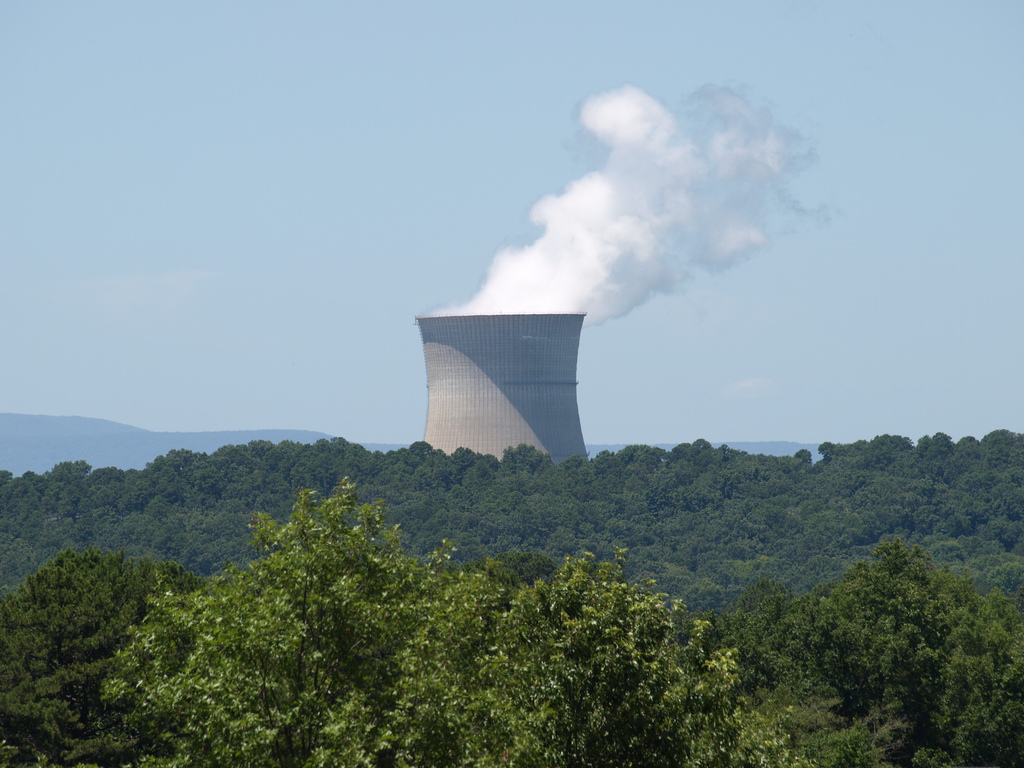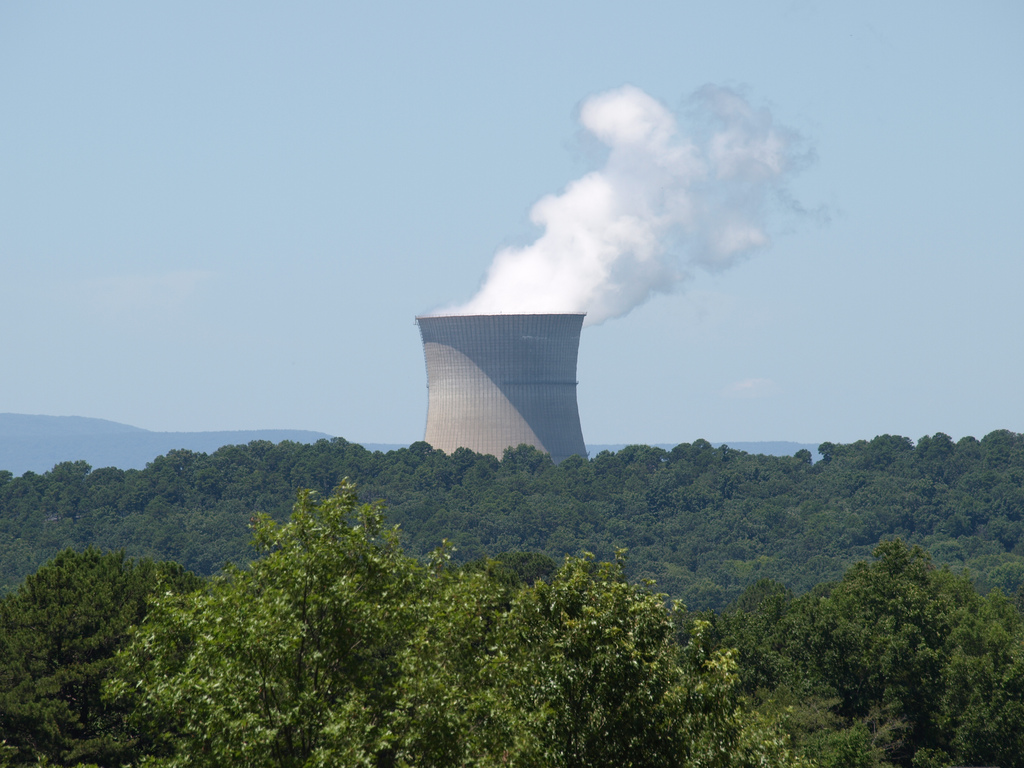 Anyone watching the aftermath of the earthquake in Japan can see: The human and ecological costs of nuclear power far outweigh those of any renewable energy.Cross-posted from New Deal 2.0.
Anyone watching the aftermath of the earthquake in Japan can see: The human and ecological costs of nuclear power far outweigh those of any renewable energy.Cross-posted from New Deal 2.0.
On March 14, an editorial in The New York Times stated, “This page has endorsed nuclear power as one tool to head off global warming. We suspect that, when all the evidence is in from Japan, it will remain a valuable tool.” I want to argue that, to the contrary, the lesson to be learned from the catastrophe in Japan is that nuclear power is not even part of a sustainable solution to global warming. The whole idea behind preventing global warming is to protect the Earth’s ecosystems, collectively known as the biosphere. You can’t save the biosphere if it’s irradiated. The same problem rears its ugly head with most biofuels, certainly with corn ethanol; it won’t matter if the climate isn’t changing if the planet has been turned into one big desert because the soils and fresh water have been destroyed.
Speaking of water, the reactors that are melting down were supposed to be of a superior design, “light water” reactors, the “light” making it sound easier on the environment. But it turned out that unless you use (and abuse) prodigious amounts of circulating water, the whole system implodes. When the effects of global warming kick in and sea levels rise and erratic rainfall leads to unforeseen downpours or extended droughts, more sequences of rare events will lead to more nuclear power disasters.
Why is it worth potentially losing a region of a country, or even a whole country, just to generate electricity? What happens if a cloud of radiation heads for Tokyo, or moves into Korea? Why do we even have to worry about this?
I am not advocating the immediate closure of all nuclear power plants. All of the plants on or near earthquake faults, or on a coastline, should probably be considered for early retirement. I am advocating that no more nuclear power plants should be built.
Besides the painful facts of ongoing meltdowns, nuclear power plants don’t need to be built because truly renewable, or perhaps more descriptively, fuelless electricity technologies, like wind, are far superior to nuclear energy. The key to a sustainable energy supply is that there be no fuels. The fuels we currently use are oil, coal, gas, plant matter, and … uranium. The key characteristic about fuels is that we obtain energy from them by burning them, making them explode, letting them radiate — that is, they create great amounts of heat.
Now, burning a fuel is very attractive because you can obtain large amounts of energy. It’s easy to concentrate. The problem is that burning something is inherently dirty and wasteful. Electric power plants that use fuel waste about two-thirds of their energy, heat that simply dissipates into the environment. Think about that — the allegedly high-tech world of fossil fuels and nuclear power is wasting way over half of its fuel. The third problem with fuels is that they run out, as oil is starting to do.
Coal plants are very destructive to human health, certainly more on a day-by-day basis than nuclear plants, because of the mercury and other pollutants that go up the smokestack. And then, of course, there is the carbon dioxide. About 60 percent of global greenhouse-gas emissions come from fossil fuels. The nuclear power industry also creates carbon emissions, because of all the mining, transportation, and construction surrounding its use. But it emits less carbon than do fossil fuels. The problem, clearly, is that every decade or so a significant part of the Earth’s surface is threatened with irradiation. Again, not a solution.
Wind, solar, geothermal, and hydro (water) energy of various sorts have no fuel. They convert a source of energy into electricity, using machinery. The source of energy is basically unlimited. There is no pollution or carbon dioxide (although classic hydropower, in the form of dams, can wreak havoc on ecosystems and emit carbon dioxide when organic matter putrefies in their artificial lakes). Although renewable energy technologies also waste most of the energy going through them, this waste is not in the form of heat.
Heat waste is what is destroying the nuclear power plants at Fukishima, and this phenomenon is the result of an overly complex system. Charles Perrow wrote a book called Normal Accidents: Living with High-Risk Technologies way back in 1984. Recently, there has been a good deal of interesting work on the idea of resiliency, that is, the capacity of a system, whether an ecosystem or a society, to withstand mistakes or problems or failures (for example, see the book The Upside of Down by Thomas Homer-Dixon). Resilient systems don’t produce as much as nonresilient, or brittle, systems, at least in the short term — but in the long-term, resilient systems are much more effective and useful because they don’t collapse. And when something collapses, like a nuclear reactor, at best it stops being useful and at worst it becomes extremely destructive.
Brittle systems can look more productive in the short-run, because often they are using themselves up and destroying their surrounding ecosystems in the process. Another way to look at it is that they are capital-destroying. For instance, agriculture can achieve fantastic levels of output for a while, but it can destroy the soil and water on which it depends, as shown by David Montgomery in his book Dirt: The Erosion of Civilizations.
In the case of nuclear power, in the long-term, there is probably nothing more expensive, because the nuclear waste — such as the “spent fuel rods” that at the time of this writing are burning and spewing radioactive gas — has to be taken care of for hundreds or even thousands of years. And then there is the occasional country or region that is destroyed. And uranium mining does the same thing, at a smaller scale. That is, if the costs of nuclear power are averaged over a few thousand years, it will turn out to be the most expensive energy ever produced.
You may see erudite and sophisticated debates about whether wind, nuclear, or coal are more expensive in terms of kilowatts of electricity or kilowatt hours. But these costs can never include the cost of a collapse of a country, region, or entire civilization.
The ultimate irony of nuclear power may be that it is totally dependent on government intervention in the economy, and yet conservative Republicans are its greatest boosters. Because it can destroy whole regions, only the government has the capacity to clean up the mess, not private insurance companies. When it comes to energy, Republicans are hardcore socialists. They advocate for subsidies for fossil fuel companies, for the use of the military to protect oil trading lanes and oil deposits, for insurance for nuclear power, and for research and development for all of them.
Governments have always been behind nuclear power, and by now the industry has become thoroughly entangled with huge private firms like General Electric and Tokyo Electric Power. The political economic inertia, built up over 60 years, is on autopilot — or maybe the cooling system has malfunctioned, whichever technical metaphor you prefer. Utilities bandwagon with a “sure” thing, something that has been done dozens or hundreds of times before, like coal plants or light-water reactors. But wind installations are expanding exponentially. Even the short-term costs of wind and large solar farms is approaching coal in the short-term, and the costs of nuclear plants are expanding at the same rate, kept alive by subsidies from socialists like the Republican Party.
Let us hope that Fukishima’s greatest damage is to the nuclear power industry, and not to Japan and the surrounding regions. And let us hope that nuclear energy is never, ever again, included in a list of clean energies. Nuclear power is over — long live renewable energy!




